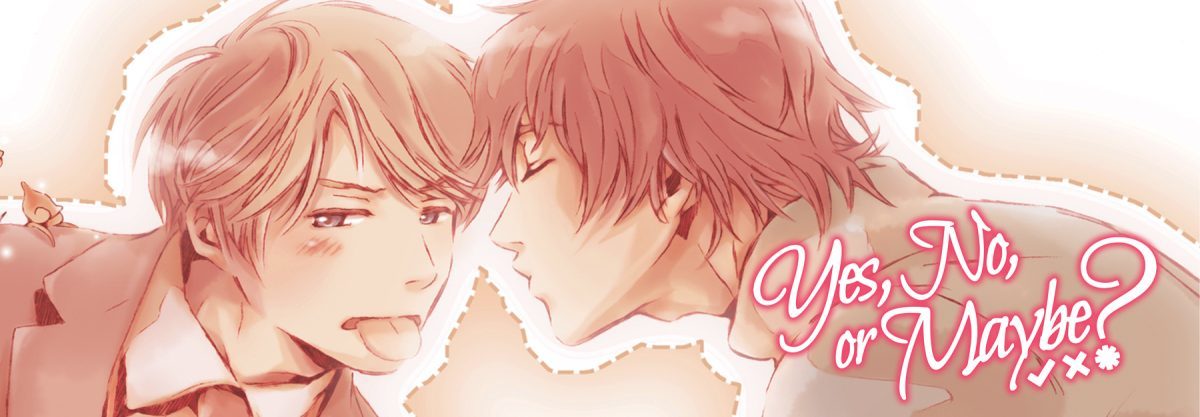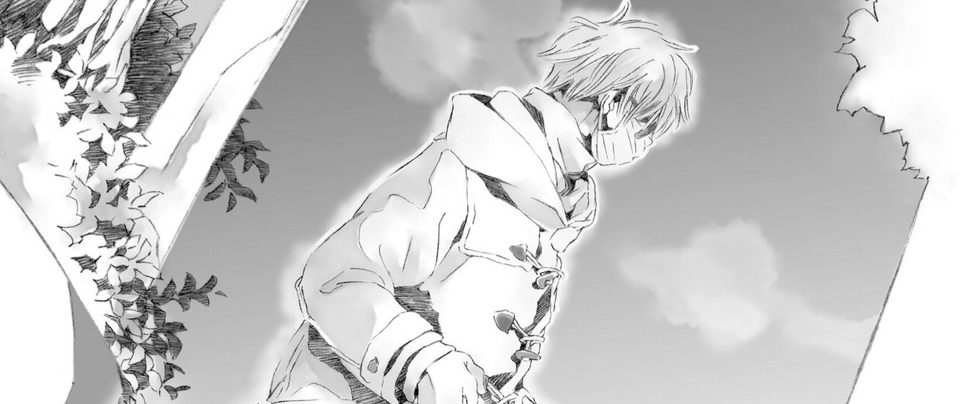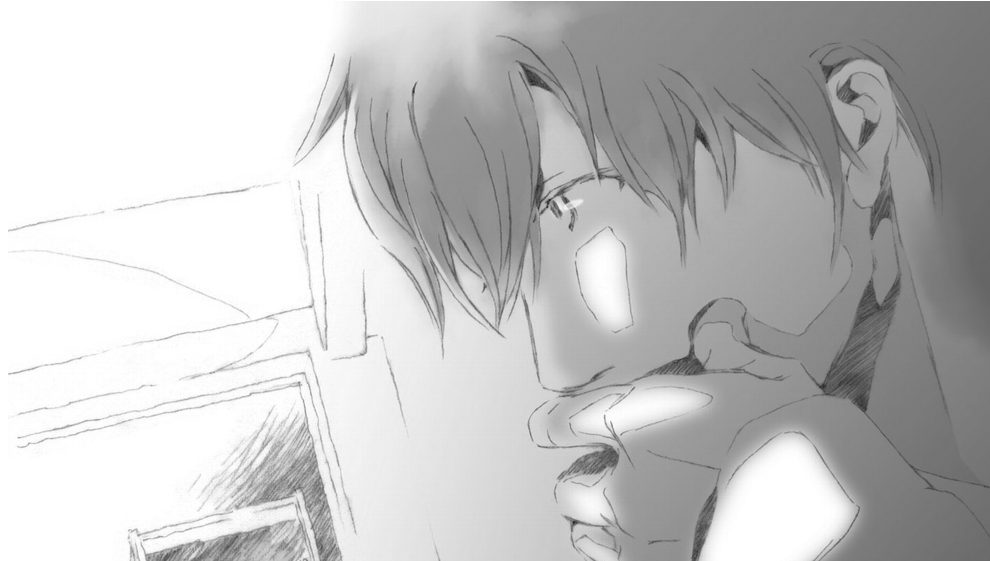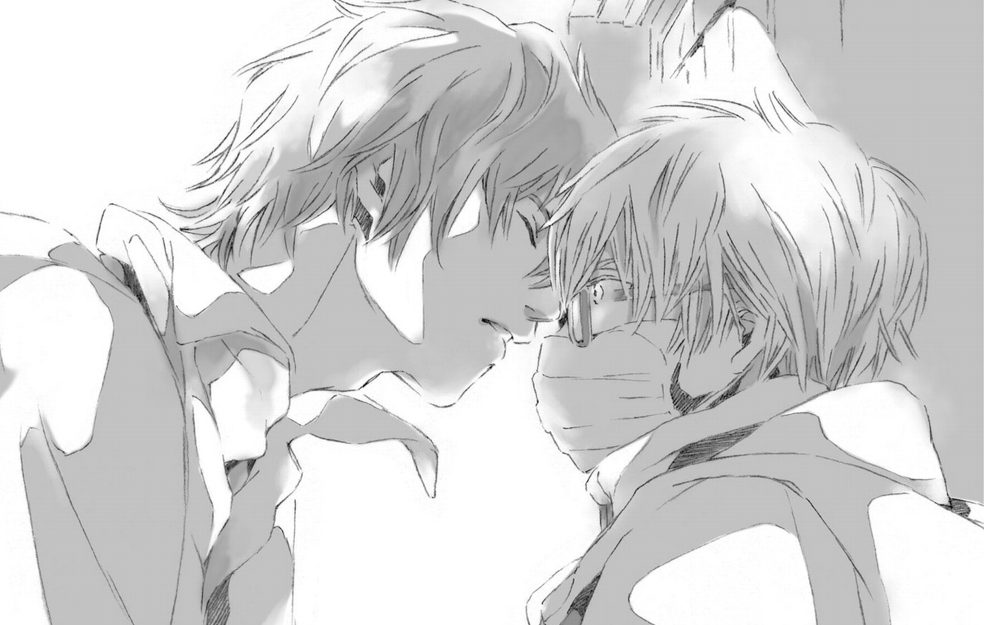We’re a month away from the movie adaptation of Japan’s sensation boy’s love light novel, イエスかノーか半分か by Michi Ichiho, (or as localized in English, Yes, No, or Maybe?). In anticipation of the release, we sat down with a Kindle and read the official English licensed translation of the original novel.

To kick things off, let’s make a note that this novel was devoured in a single sitting. From the start, Yes, No, or Maybe? is fast-paced and doesn’t pull any punches. Our story is told from the perspective of Kei Kunieda, a primetime news anchor who’s seen a swift rise to nation-wide popularity in Japan while leading his secret double life. When the cameras are rolling Kei puts on his public persona as an evening news TV Prince Charming, adored by the masses and everyone’s friend in the studio. But the second he gets home, he strips off his suit and tie for an old tracksuit, fake glasses, facemask, and messy hair. His normal self is actually a total slob who enjoys reading old manga and eating instant ramen and cheap convenience store beef bowls.

Appearances aren’t everything though. The truth is, deep down under all his grime and poor diet choices, Kei is actually just as rotten on the inside as outside. Being written in first-person, Yes, No, or Maybe? barely goes a single page without Kei’s internal monologues screaming insults at his coworkers, or even wishing to apply blunt force trauma. While normally this would warrant teeth-grinding disgust, Kei’s antics are so extreme that they often come across as comical instead of tasteless. In some regards, Kei is oddly relatable despite his extremes. We all have a coworker we say we’d love to strangle, even if we don’t mean it.
For two years he has upheld his routine of switching personas and using his trashy disguise to protect his fame and public relationship, but all that comes to an end when he meets the openly bisexual man, Ushio Tsuzuki. Originally through work, Kei documents Ushio over a series of interviews, as well as looking into his work as a stop-motion animator working on a new introduction for the primetime news segment. That same evening, he encounters Ushiro while walking home in his “lazy-guy” disguise and accidentally breaks Ushiro’s hand when ignoring traffic regulations. To avoid creating a public scandal, Kei is forced to assist Tsuzuki in painting clay figurines and setting up frames every night after work while his hand heals. To avoid giving himself away, he names himself Owari. This is a pun, as “owarai” can be spelled with the kanji meaning “it is finished” while Tsuzuki can be spelled using the kanji meaning “to continue.”
And so Kei/Owari is forced to be around Ushiro Tsuzuki every day and night, trying his best not to be found out. Yet it seems he has met someone who is able to accept and ground both sides of him. As days stretch into weeks, and even months, Kei’s feelings become complicated, unsure of how he feels being around someone who can so easily accept Prince Charming as well as the “troll under the bridge.” Does he love Ushiro as Kei? As Owari? With only half of himself? Or his entire being?

Accompanied by the light novel is a collection of illustrations by Lala Takemiya, perfectly complementing the story’s most critical scenes, as well as the steamiest moments.
Localization
Yes, No, or Maybe? isn’t without flaws. Although unable to procure a copy of the original Japanese version for comparison purposes (and believe me, I tried), it is still painstakingly obvious that the Seven Seas translation team took several liberties with the localization, especially with character dialogue. Between Kei using insults such as pleb, himbo, and dumbo, characters exclaiming particular phrases and metaphors that are only used in English speaking nations such as “Jesus Christ, you’re so boring” or “Cool your jets, man,” to even the unironic use of “ROFL” during internal monologues, the dialogue is cringeworthy and inconsistent, regardless of character or situational context. In many cases, the dialogue sounds like it was written for a bad fanfiction by a high school student trying way too hard to appear mature in their writing. With a dash of Internet speak.

After reading the entire novel, even the English title should be brought into question, as the original Japanese title was more directly Yes, No, or Half? which played on the theme of the novel: loving someone with half, or your whole self. A possible better localization would have been Yes, No, or Halfway? It would have at least made it more distinctive when trying to Google search it.
Should You Read It?
Despite its flaws, Yes, No, or Maybe? is an instant hit for yaoi fans, a real page-turner, and truly entertaining. Since its publication in Japan in 2014, there have been several sequels, spin-offs, manga adaptations, and now finally the anime film version is coming next month as the main feature of the 2020 Boy’s Love Festival in Tokyo, this December.
Until then, English speaking fans can read Yes, No, or Maybe? on their e-reader devices or in print. It’s available on Amazon and Kobo from Seven Seas Entertainment.














